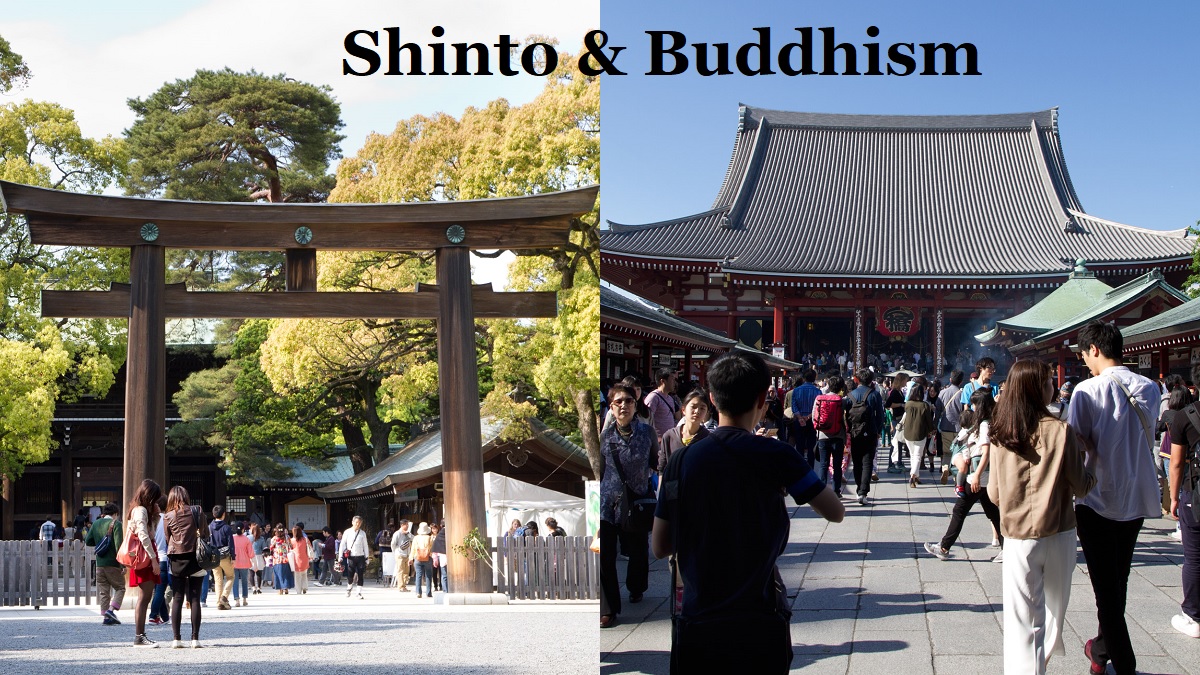Shinto and Buddhism - Japanese religions
Shinto
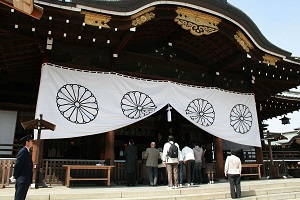
Shinto means "the way of the gods".
It is the Japanese religion from the ancient times.
The idea is based on the nature and ancestor worship.
All things on earth were created and ruled over by the gods who live in all objects in the nature.
So, mountains, trees, rocks and rivers often become objects of worship.
It constitutes the foundation of the sensibility of the Japanese people.
Shinto has supported the Emperor system in a religious sense, and even now its ancient customary practices remain as the religion of the Imperial Family.
Shinto Shrine
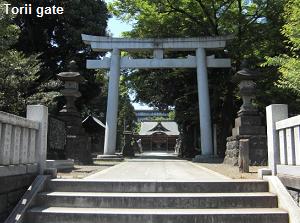
Shinto shrine is called as "jinja" in Japanese.
For big shrine, it named "jingu" (For example, Meiji-Jingu in Tokyo) or "taisha" (For example, Fushimi-Inari taisha in Kyoto).
It is built at sacred area, and objects of worship where a god or some gods live are enshrined.
Generally, the area is surrounded by the forest.
At the entrances of shrine, there is a torii gate.
It's the gate to a sacred place and two crosspieces are set on top of two upright pillars.
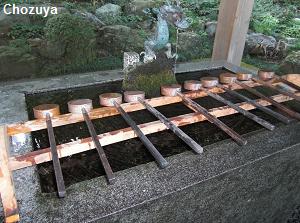
After passing under the torii, you find Chozuya (hand-wash station) near approach.
The worshippers purify their hands there.
In the center of sacred area, there are the main sanctuary and other facilities.
The floor of the main building is elevated and roofs are generally thatched with cogon grasses and Japanese cypress bark.
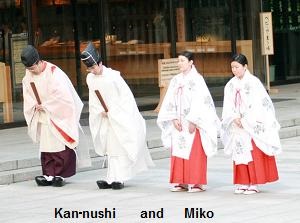
In a shrine, there are some "kan-nushi" who is the Shinto priest.
They serve the divinities by making offerings and reciting a Shinto prayer.
They also perform the Shinto purification for people who come to worship and execute weddings.
And in a shrine there are several "Miko".
Mikos are young women in the service of Shinto shrine.
They assist the kan-nushi in various ceremonies and perform in ceremonial dances.
How to worship at a shrine
General visitors can't enter the main sanctuary.
So you must worship in front of the main shrine.
You worship in the following steps.
- Throw a coin into the donation box.
- Bow twice.
- Clap your hands twice slowly.
- Bow once.
Mikoshi
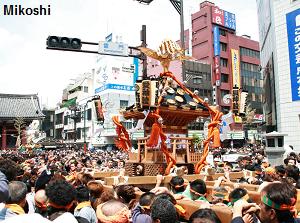
Mikoshi is a portable shrine and it appears at the festival of the shrine.
A decorated miniature shrine stands on two poles for carring.
During the festival, many people bear a mikoshi on their shoulders.
They bring it from the shrine, and carry it through the town.
Kamidana
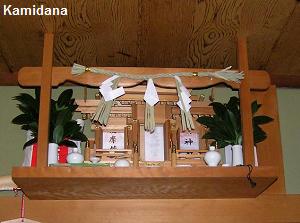
Kamidana means shelf of god. "Kami" means "god" and "tana (dana)" means "shelf" in Japanese.
It is a type of miniature shrine placed or hung high on a wall in the room or the office.
It is made of wood with roof and steps, and the charms and amulets are put in the center.
Sake, rice and candles are offered, and people sometimes pray for family safety and business prosperity in front of it.
Until not long ago, most families had it in their houses, but recently they have decreased in number.
Buddhism
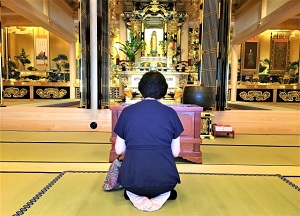
Worshipping in front of Buddha statue
Buddhism was founded by Buddha in current India around the 5th century B.C.
It was introduced into China around the first century A.D.
Buddhism in the eastern Asia developed in China, then it was introduced into Japan in the middle of the 6th century.
Many temples were built in every area under government patronage, and it spread throughout the country.
In the Kamakura Period (1185-1333), a number of new leaders appeared and deepened its philosophy.
Then, the Zen Buddhism was brought to Japan in the Period by priests who studied in China.
It spread as the main religion of samurai.
Since that, Japanese traditional culture had been created under the influence of Buddhism.
And Buddhism has been deeply rooted in the life of Japanese people together with Shinto.
Buddhist Temple
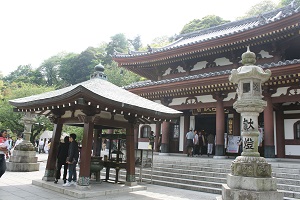
Hasedera temple in Kamakura city
Buddhist temple is called "tera" in Japanese.
And the Chinese character is pronounced as "ji", so the name of most temples has "ji" at the end of the word like "Horyu-ji"
Buddha statues are enshrined in the halls of the temple.
Priests or nuns reside in the temple, and they practice ascetic exercises and hold the Buddhist ceremonies.
There are some buildings such as the main temple, an auditorium, a pagoda, a bell tower and so on in the site.
Many graves are set within the temple site in Japan.
People go to the Buddhist temple with their own family's tomb during the Bon Festival in August and equinoctial week.
In Buddhism, the soul of the ancestor came back at that time.
The Buddhist priests usually shave their heads and wear a Buddhist priest's stole.
There are occasions when spiritual cultivation is continued through rigorous austerities, like being pelted by a waterfall.
But most priests are also married at their choice and reside in a temple.
Many of them practice ascetic disciplines, maintain graves, and chant Buddhist sutras for memorial services held at their temples.
They also go to chant sutras in homes for funerals and for some private memorial services.
Essence of Buddhism
Most of Japanese families are regarded as believer in Buddhism.
But most of them including me don't know what is Buddhism.
The follows are the essences which I learned from some descriptions.
- All things on earth continue to change eternally.
So if you don't think that dying is the end of you, you will get away from the pressure. - We are given a life in eternal changing world, by chance.
So the exsistance of each person isn't absolute. - When you understand above spirits "perfectly", you can enter the calm world.
Buddha attained these spirits and taught them to many people in the 5th century B.C.
But he didn't leave them in script, so his pupils wrote many scriptures (sutra).
So, by chanting a Buddhist sutra, we comfort the spirits of dead people.
Therefore, from the period to now, priests had learned the teachings of Buddhism and interpreted in their own way.
Then, excellent priests founded their own school.
There are many schools of Buddhism in Japan, and each temple belongs to any of the schools.
Priests understand the essence of Buddhism, and they lead the common people.
We have only to worship the Buddha in the manner of the school of Buddhism.
Of course, most of us don't know the religious doctrine of the school.
We worship the Buddha in any temple, so we will receive blessings of the Buddha.
In our daily lives, that is the simple style as the believer in Buddhism.
Zen sect
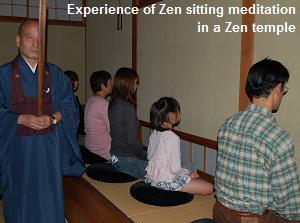
Zen is one sect of Buddhism.
In the early 6th century, Indian Bodhidharma introduced it to China, and some priests who studied abroad brought it from China to Japan in the 14th century.
According to the Zen teaching, truth goes beyond verbal expression.
Therefore, enlightenment can be realized only through sitting in meditation and training in calming the self.
How to worship at a temple
As above, difficult knowledges about Buddhism are not required to worship at a temple.
You have only to worship in the following steps in front of the Buddha statue.
- Throw a coin into the donation box.
- If there are a big bell, tincle them.
- Join your hands in prayer.
If you know the Buddhist sutra, chant it.
Incense stick and its smoke
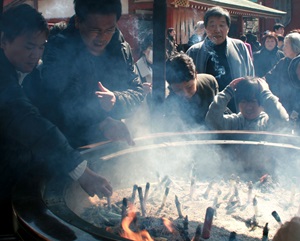
Jokoro
In Buddhist ceremony, incense sticks ("senkô" in Japanese) are used.
We light them from candlelight.
The smoke from the incense sticks purifies your body and connects your heart to the deceased.
In large temple, big incense burner called “Jokoro” is put in front of the main hall, and a lot of incense sticks are burned and smoking.
Before worship, covering the smoke is to purify your body and have divine favor.
Juzu
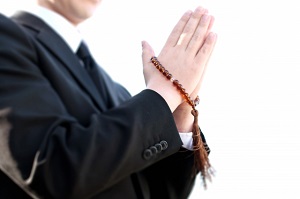
Worshipping with juzu
We use a juzu when we worship at a temple.
It is like a necklace and has basically 108 beads.
The number are said to remove the 108 worldly desires cited in the Buddhist teaching.
But juzu with 54, 36 or 27 beads are often used.
You put it on your joining hands when praying to Buddha or worshiping in front of the tomb.
Lucky goods at shrine and temple
Omamori
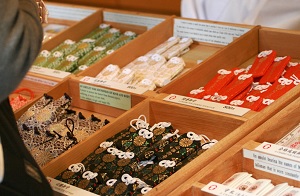
You can buy various omamori
Omamori is the Japanese talisman.
It is said that omamori brings good fortune and expels evil.
According to the wish of the prayer, there are omamoris for traffic safety, success in passing an exam, business prosperity, good health, safe childbirth and so on.
It is the form of a small pouch.
So keep it on your person, hang in cars, place in your home, or attach to a pillars or a gate of your house.
And it is a good idea to gift to your family or lover.
Omikuji
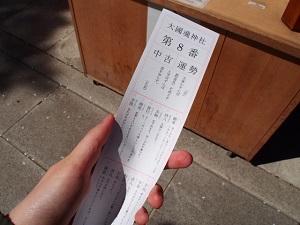
Omikuji is a written oracle by drawing lots.
Shake a wooden box, and a thin stick with a number comes out.
You get the omikuji sheet corresponding to the number.
The good or bad luck of your fortune is written in the sheet.
Also the fortunes about your health, academics, business, marriage proposals, and victory or defeat are written.
It is a long narrow paper, and usually you tie to a rope or a branch of a trees after you read.
But unfortunately, there is no omikuji written in English.
If you visit there with Japanese friends, get them to translate it into English or the langauge of your country.
Ema
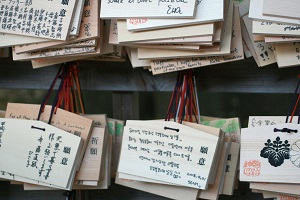
Ema means picture of horse.
As its name suggests, it is a pictures of horses drawn on a wooden board.
On the board, write your wish.
(Of course, it is OK to write in your country's language.)
Then, you hang it on the wall for Ema.
The shrine will satisfy the wish on your Ema.
In ancient Japan, there was the practice of presenting horses when praying for something, but this changed to offering votive pictures of horses.
At present, there are other pictures besides horses.

